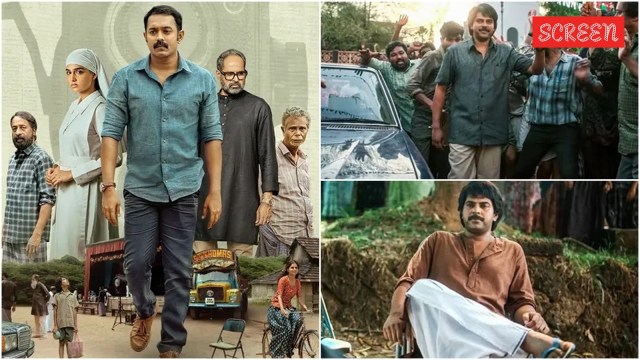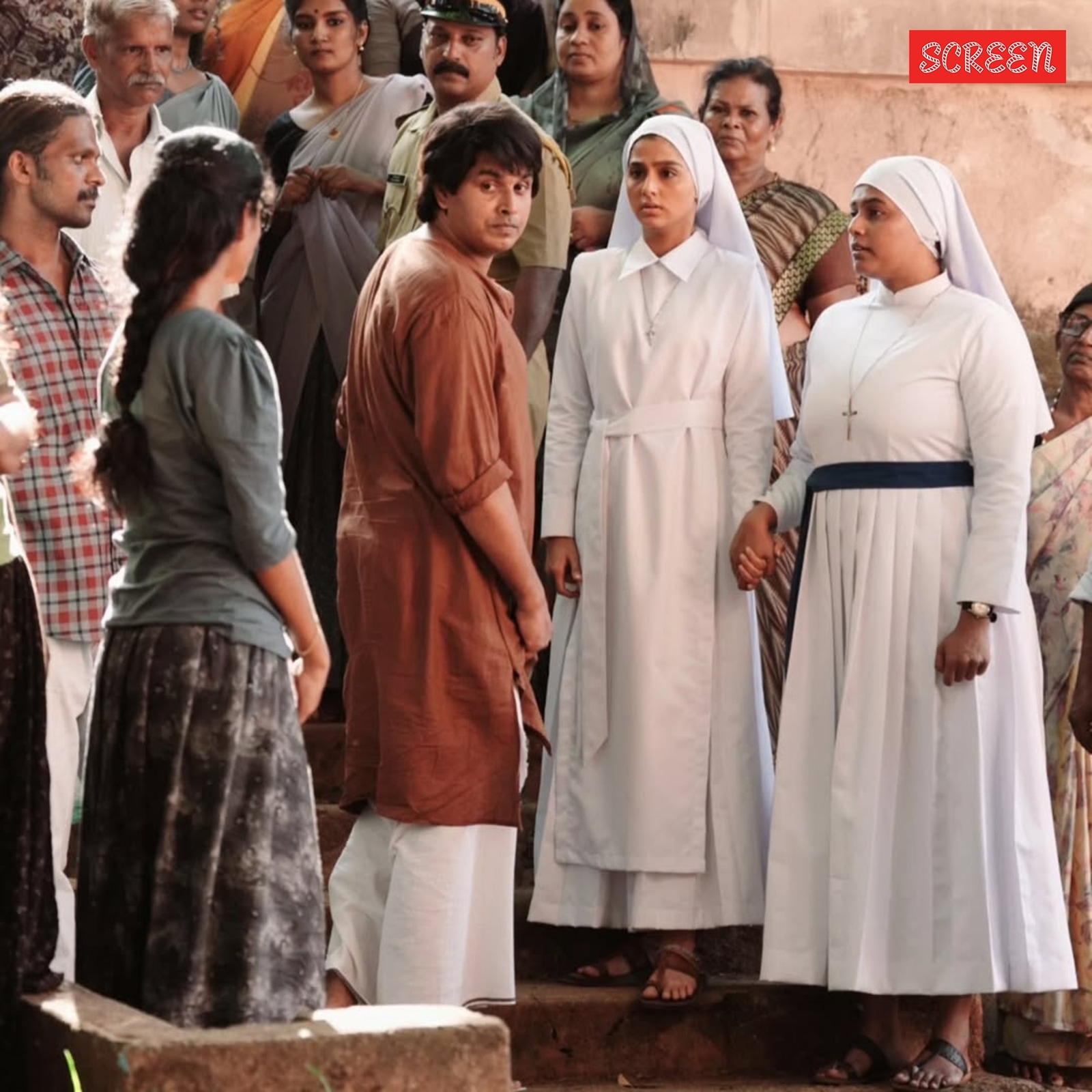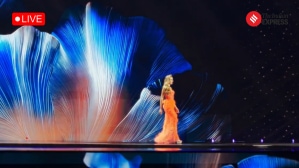After a blockbuster run at the box office, grossing over Rs 75 crore worldwide, director Jofin T Chacko’s Rekhachithram has finally started streaming on SonyLIV, once again becoming the talk of the town. While those who missed the film in theatres are now busy catching the alternate-history (althist) mystery thriller, it has also earned a large group of repeat viewers who are discovering new Easter eggs, deepening their appreciation for the movie’s nuances, hidden details and brilliance.

With no trace of her before or after that night, her colleagues assume she simply eloped — a notion reinforced by the fact that no one ever came searching for her: no relatives, no friends, no one. Thus, her death remains a secret for decades until, 39 years later, one of the guilt-ridden perpetrators confesses, revealing the involvement of others and the location of her buried body. Shockingly, however, even he doesn’t know her identity despite being an accomplice in her murder. Shortly after, he takes his own life, leaving the police with an unidentified corpse that had been lying buried for decades and just the names of the accused persons.
Despite having no clear starting point to uncover the woman’s identity, CI Vivek Gopinath (Asif Ali) commences the investigation at a dead end, hopeful that persistent efforts would eventually help him connect the dots. The rest of the film follows his probe as he pieces together the puzzle, ultimately reconstructing a Rekhachithram — a portmanteau of Rekha and chithram (meaning “picture”), referring to a sketch or facial composite — that sheds light on both her life and death.
Watch Rekhachithram trailer here:
While Rekhachithram earned widespread praise for its writing — brilliantly utilising speculative fiction’s subgenre of alternate history — along with its direction, performances and more, the most lauded aspect was its masterful use of Artificial Intelligence (AI) to create a younger version of Malayalam megastar Mammootty. This not only lent authenticity to the scenes taking place in Kathodu Kathoram’s set but also anchored the film and Rekha’s character in an emotion (Mammootty) deeply resonant with the Malayali populace.
Even as speculations swirled about how director Jofin and his team managed to pull off this exceptional feat — especially at a time when even big-budget Indian ‘spectacle’ films are getting trolled for their shoddy visual effects — Team Rekhachithram kept their secret under wraps until recently. Was it actually Mammootty himself who played the role, with the makers later applying de-ageing technology, much like how legendary filmmaker Martin Scorsese digitally de-aged actors Robert De Niro, Al Pacino and Joe Pesci in The Irishman (2019)? The question seemed reasonable, especially since Mammootty had lent his voice to a dialogue in Rekhachithram’s climax. However, there were no credible reports to support this theory.
 Twinkle Surya as Mammootty in Rekhachithram. Anaswara Rajan is also seen. (Credit: Instagram/@tw.inkle230)
Twinkle Surya as Mammootty in Rekhachithram. Anaswara Rajan is also seen. (Credit: Instagram/@tw.inkle230)
Finally, following the movie’s OTT premiere, Jofin revealed that the younger version of Mammootty was created using a stand-in actor, Twinkle Surya, who meticulously replicated the Malayalam icon’s movements and his face was later digitally replaced with that of a younger Mammootty, creating an immersive cinematic experience for the audience.
Story continues below this ad
Mentioning that there were no additional preparations or fittings made for AI, Twinkle, in a conversation with Cue Studio, revealed that the team concerned was always present during the shoot of his scenes, offering precise instructions, including on facial positioning. “I was told not to turn my face to either side under any circumstances. I was also instructed to keep my lips sealed and avoid showing my teeth. While raising my hand (to wave at fans as Mammootty), it had to stay clear of my face to prevent any distortion in the final image,” he explained.
Since AI was used exclusively for face replacement, Twinkle had to physically transform himself to match Mammootty’s younger physique. He also dedicated time to perfecting the veteran actor’s mannerisms and body language, which he mastered by studying his archival interviews.
While artiste trainer Arun Sankaran Pavumba, who specialises in body language and other traits from retro cinema, coached Twinkle to perfect Mammootty’s mannerisms, Andrew Jacob D’Cruz of Mindstein Studios led the AI-driven de-aging process. Mindstein Studios is known for its VFX work in films such as Minnal Murali, 2018: Everyone is a Hero, Ajayante Randam Moshanam, Neelavelicham, Kurup and Kumbalangi Nights. Andrew has twice won the Kerala State Film Award for Best Visual Effects, for 2018 and Minnal Murali.
“Recreating a specific look of Mammootty from a particular movie was challenging. Since the lighting styles and other visual elements of Kathodu Kathoram differed from those used in contemporary cinema, we didn’t achieve the desired output at first. It took us four to five months to recreate Mammootty’s face properly,” Andrew told The Cue. “Since AI-generated results vary with each attempt, we had to create four different versions of his face for every shot,” Andrew added, noting that discussions about VFX had begun as early as Rekhachithram’s pre-production stage.
 A younger version of Malayalam megastar Mammootty created using AI. (Credit: Instagram/@megastar_updates)
A younger version of Malayalam megastar Mammootty created using AI. (Credit: Instagram/@megastar_updates)
Rekhachithram is not just another feather in Malayalam cinema’s cap, thanks to its experimental narrative and impressive execution — all accomplished within a modest reported budget of Rs 9 crore. It also serves as a lesson for many Indian filmmakers who squander producers’ money in the name of ‘spectacle’, relying on massive set pieces, excessive VFX or an overload of junior artistes, often without proper planning or execution.
Story continues below this ad
At a time when several actors have fallen victim to shockingly realistic deepfake videos created by random perpetrators, a few recent films drew attention for their poorly executed VFX, despite having enormous budgets. Venkat Prabhu’s The Greatest of All Time (GOAT, 2024) was one such movie and faced significant backlash for its unconvincing AI-generated portrayal of the late Vijayakanth and the cartoonish de-aging of “Thalapathy” Vijay. Meanwhile, director S Shankar, once hailed as a pioneer in integrating cutting-edge technology into his movies, also came under fire for Indian 2 (2024). After the demise of actor Nedumudi Venu, Shankar’s team used AI to complete his scenes, but the results were anything but seamless. Not only did these portions in the two movies look unpolished, but many felt they dishonoured the legacy of these actors due to their poor execution.
From Prabhas’ Adipurush (2023) and Ranbir Kapoor-Alia Bhatt’s Brahmastra: Part One – Shiva (2022) to Mohanlal’s Barroz, several high-budget Indian films have been criticised for substandard VFX and CGI. Rekhachithram, meanwhile, proves that a hefty budget alone does not guarantee quality. While money is predominant, meticulous planning, a clear understanding of technological limitations and strategic use of AI are also crucial. Recognising the constraints, Jofin and team used AI-generated Mammootty only when necessary and relied on their filmmaking skills to make people feel the megastar’s presence in other portions through masterful visual and narrative techniques; much like what filmmaking legend Steven Spielberg did in Jaws (1975).
Due to budget constraints and unreliable mechanical sharks, Spielberg used inventive storytelling — strategic camera angles, suggestive visuals and sound design — to create the illusion of the shark’s presence without frequently showing it. Similarly, Rekhachithram also successfully convinces the audience that Mammootty is present in every scene set in the Kathodu Kathoram set, probably preparing for a scene sitting in the adjacent room. Shaji Naduvil’s production design and Appu Prabhakar’s cinematography too played a crucial role in creating this atmosphere, while John Manthrickal and Ramu Sunil’s screenplay ensured that audiences remained engaged in Rekha’s story and CI Vivek’s investigation and their focus never derailed.
Another factor that accentuated Rekhachithram’s appeal was Jofin’s decision to cast the children of certain actors to portray their younger versions. While Shaheen Siddique played the younger Rajendran, a role his father Siddique portrayed in the present timeline, Sreejith Ravi stepped into the role of Pallasheri, a film tabloid journalist, played by his father TG Ravi in the current portions. Director Jenuse Mohamed, meanwhile, took on the part of his father and veteran filmmaker Kamal’s younger self when he worked as an assistant to Kathodu Kathoram helmer Bharathan.
Rekhachithram’s nostalgic essence was further enhanced with the appearance of KB Venu and Devendranath Sankaranarayanan as the younger versions of Bharathan and screenwriter John Paul, respectively, with them sharing amazing physical similarities with the legends. Adding to this was the clever integration of a fictionalised backstory behind the phrase “Mammootty chettan” from Mutharamkunnu PO (1985), narrated by actor Jagadish himself, who originally penned the film’s story.




 Twinkle Surya as Mammootty in Rekhachithram. Anaswara Rajan is also seen. (Credit: Instagram/@tw.inkle230)
Twinkle Surya as Mammootty in Rekhachithram. Anaswara Rajan is also seen. (Credit: Instagram/@tw.inkle230) A younger version of Malayalam megastar Mammootty created using AI. (Credit: Instagram/@megastar_updates)
A younger version of Malayalam megastar Mammootty created using AI. (Credit: Instagram/@megastar_updates)































